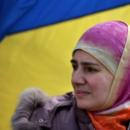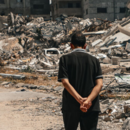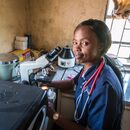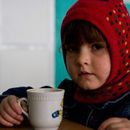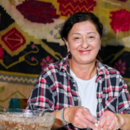Samwil was born on 24 December 2004. In the village Lamlumpu, where his family lives, it’s common that most children are born traditionally at home. If his delivery had been without complications, he would have been born like that. But Samwil was born in hospital in Banda Aceh, the capital of the Indonesian province Aceh. And this is what saved their lives.
A strong earthquake began in the Indian ocean early in the morning of 26 December 2004. It was followed by a massive tsunami which swept away several villages in India, Indonesia, Sri Lanka and Thailand. Aceh province was the first and the worst affected area.
In Samwil’s village three out of four inhabitants died. His grandfather was found in a pond. He was recognized only because he had identification in his pocket. The other unidentified bodies found in the mud were buried in a mass grave.
Matakin was at home in Lampulu when the ten meter high wave hit. “I didn’t know where to run,“ he said. He doesn’t remember anything about how he ended up in the black water. He was severely injured, but survived. Twelve of his relatives died.
“I have lost everything. The wave had even torn my clothes to pieces. Everything that was left to me in this world was a ring on my finger and my shorts,” he recalled.
was a ring on my finger and my shorts,” he recalled.
The destruction was unimaginable; human suffering even worse. “You were either dead or drowned or shattered,” says one of the charity colleagues who visited the area early after the tsunami hit.
Half a million people lost their homes in Aceh alone. The American Charity, Catholic Relief Services (CRS), was one of the charity organizations that helped in hard-hit areas affected by tsunami. CRS was followed by other organizations including Caritas Czech Republic which has closed its office in Aceh only this year.
Samwill and Matakin live in houses that were built by CRS. ”I am glad that I have this house,” said Matakin. He is 30 now; he is married and has a child. He built an adjoining workroom next to his house. “The village slowly returns to life,” he said.
In some cases Caritas paid locals to help build houses. By giving them cash or food for construction work, Caritas CRhelped boost employment in the region and also restart the local economy. Moreover, people became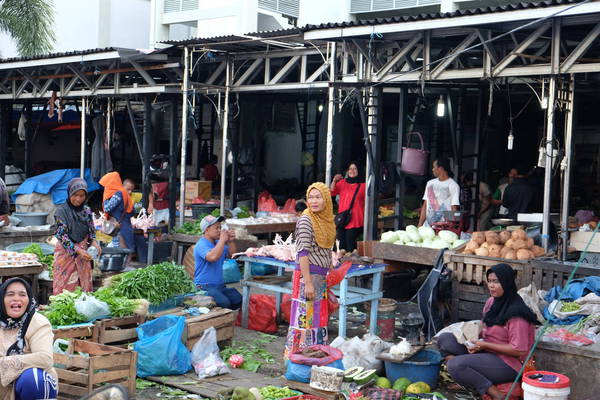 more self-sufficient. If you get help to build your own house, it is more about standing on your own two feet again rather than relying on others.
more self-sufficient. If you get help to build your own house, it is more about standing on your own two feet again rather than relying on others.
In order to start the local economy Caritas supported building of shopping centers and local markets as well. “We used to sell fish on the street before the tsunami,” says Jahrinal who currently owns his own shop at the market which was built by CRS. “I can protect my goods against sun and rain now and customers know where they can find me. I am doing well and I can provide for my family as well.”
Caritas has built in Aceh over 9 000 permanent shelters and has constructed about 350 objects such as schools, clinics, roads and markets. One of them was also the preschool YKA which is located in the centre of the town of Banda Aceh. It was built from the ground up because the original building was significantly damaged by the tsunami and had to be demolished. Only 30 of the original 600 children came back and only 17 of 60 teachers remained. Nothing remained of the old school. “Everything you could see there was now sea,” said one of the teachers. The whole school was completely rebuilt and opened again in 2008. “This new school is much more pleasant,” says headmaster Halimah.
Today it has its own ethos which supports diversity and environmental sustainability. The scholarship paid by the children from better backgrounds helps to pay fees for the poorest children. The school is expanding, with new classrooms for children from the primary school lower classes.
The nearby medical centre RSIA-Aceh for mother and child used to have only 30 beds before the tsunami. Today it has 110 beds and the new wing for the treatment of cancer is currently under construction. “In comparison with the other hospitals in the region it is like a hotel here,” says Hasrul Syah, the deputy director of the hospital. “People say that it is like going to Malaysia as they feel really good here. The hospital became well-known among mothers-to-be.”
In 2004 there wasn’t any medical centre that would focus on mother and child care. Today there is child health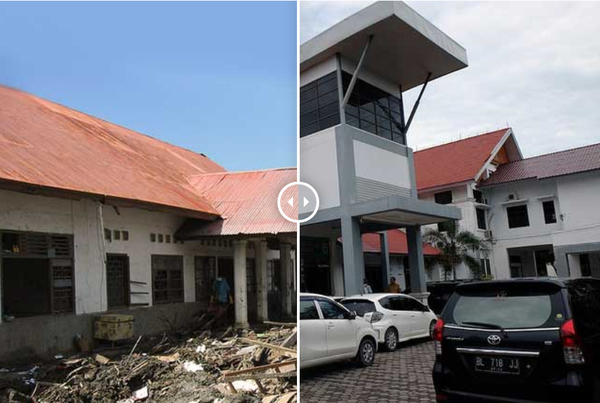 care compliant with the millennium development goals. “The centre would never have been built without the tsunami; there would be no development of mother and child care. It is visible that the goal ‘construct better’ was met,” says Hasrul Syah.
care compliant with the millennium development goals. “The centre would never have been built without the tsunami; there would be no development of mother and child care. It is visible that the goal ‘construct better’ was met,” says Hasrul Syah.
Thanks to charity supporters, facilities are managed to ensure the health care and consultation for more than 700,000 people. Down on the coast in the village areas around the town of Meulaboh, the new clinics for midwives were constructed as well as centers for education and raising awareness for mothers-to-be.
“It is a big difference,” says Ernawati, the midwife."It’s much better now. There is more space. It is clean here and we have the proper equipment. Mothers use the clinic. When any problem arises we are able to transport them fast to the medical center and ensure urgent treatment.” The local medical officials say that before tsunami from two to three mothers died in the region per year. In 2014 no mother died.
The tsunami was also a motivating factorin dthe signing of the peace treaty in 2005 between the Indonesian government and Gerakan Aceh Merdeka (GAM), the separatist Movement for free Aceh. The Agreement ended a 10-year conflict that took estimated 15 000 lives.
One of the rebels was Buyung Arta. He was hiding for a long time in the jungle with his wife and daughters when the tsunami hit.
He hurried immediately to help in his village near Meulabohu. “Nobody survived,” he recalls. He lost 23 members of his family that day.
We (people from Aceh) had to work together, as a family, to rebuild everything. The international help brought reconciliation as well. It gave us hope. The tsunami brought peace,” says Buyung Arta.
His daughter Nurlinda is 21 years old. Ten years ago she lived in the jungle with her father; she didn’t attend school. From 2007 she has been living with the rest of her family in the house that was built with the support from charities. She studies at the local university, specializing in community health. She has two years left until the end of the studies.
Not every help program was successful but most of them were. Not every house is still standing but most of them are. Some people became reliant on the external help but most of them didn’t. The World Bank described the local situation as “the most 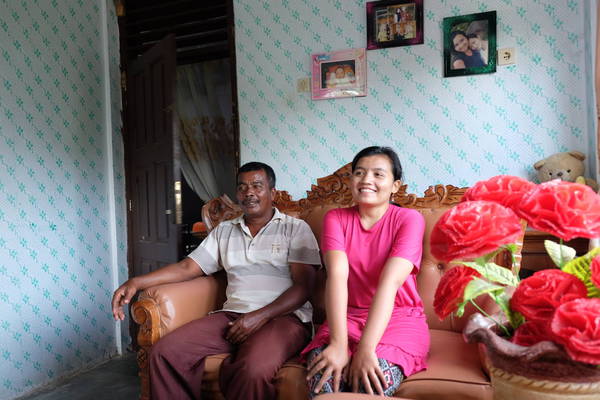 successful restoration effort“. Caritas CR partnered with the World Bank on financing to establish cooperative farms for growing of patchouli and production of the quality oil from this mint family plant which creates the basis of many cosmetic products.
successful restoration effort“. Caritas CR partnered with the World Bank on financing to establish cooperative farms for growing of patchouli and production of the quality oil from this mint family plant which creates the basis of many cosmetic products.
Back in Lamlumpu. Neither ten-year-old Samwil nor other children in his class remember tsunami. But the memories of those who survived at that time will never fade. They will meet on 26 December 2014 to honor the memory of the beloved they lost and to pay tribute to those who survived.
People in Aceh together with the solidarity that came from the whole world achieved something remarkable – from the mud and rubble they have built a more peaceful and more equal place full of opportunities.
This article from Patrick Nicholson from Caritas Internationalis was taken (and completed) from www.caritas.org.
Other photos from Patrick Nicholson of the places affected by tsunami 10 years ago can be foundat the album Caritas Internationalis at flickr.com.


